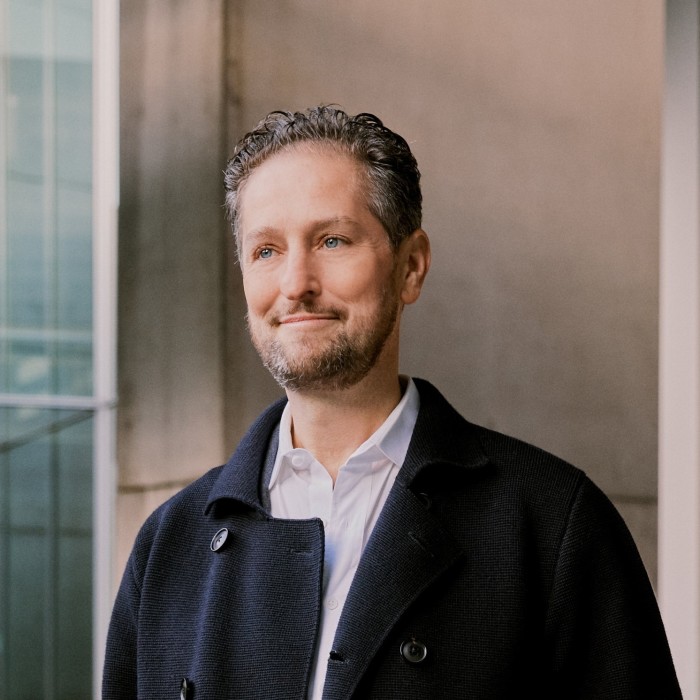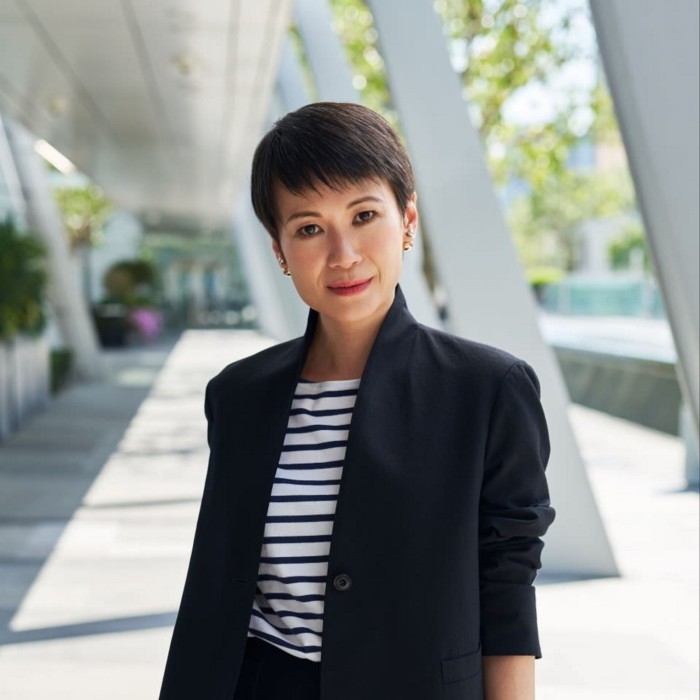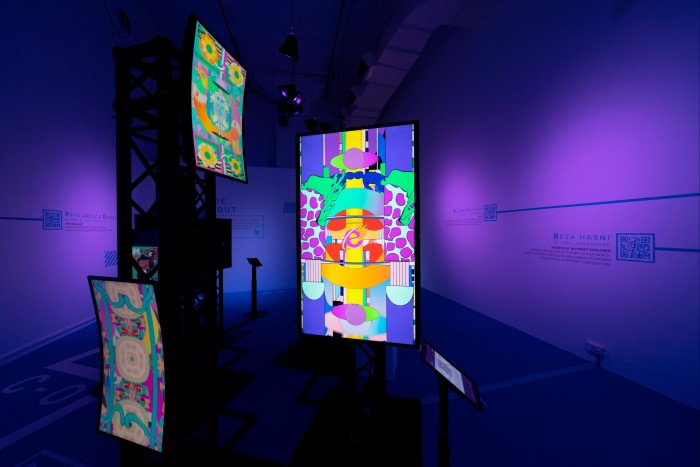Art Basel eyes Asia beyond Hong Kong for the future of its business

Roula Khalaf, Editor of the FT, selects her favourite stories in this weekly newsletter.
As Art Basel prepares to open the 10th in-person edition of its fair in Hong Kong, and its largest since the Covid pandemic began, behind the scenes the art fair group is sizing up additional revenue streams beyond its four flagship events, especially in Asia.
Singapore and Tokyo are the most recent cities it has tapped for growth, although the group’s management is quick to underline the commitment to its core fairs in Hong Kong, Miami Beach, Paris and Basel itself. “The art fairs are the top priority,” says Noah Horowitz, Art Basel’s chief executive since November. “But we are also finding other points of engagement that build on and add to the work we are already doing.”
The latest moves into alternative projects by Art Basel and its owner MCH Group seem part of a broader strategy of diversification, accelerated since Lupa Systems — James Murdoch’s investment company — became an anchor shareholder of MCH Group in late 2020.
Adeline Ooi, Art Basel’s director for Asia, points out that the timing of the latest initiatives also coincided with the impact of the Covid lockdowns, which hit Asia particularly hard, and they remain fragile territory. “Lots of projects were dreamt up during the pandemic, when we started to think about how to support galleries in a collaborative way, rather than just build up our own kingdom,” she says. Plus, “Asia is complicated, it is a difficult region to sum up. There is only so much that an international art fair can do. If we just started up another fair [somewhere else], with the same pool of clients and more expenses for galleries, that wouldn’t really feel right.”


Last year, MCH made a 15 per cent direct investment in the organiser of Singapore’s new international art fair, Art SG, which launched in January. MCH described the investment as “complementary” to the running of Art Basel in Hong Kong. At the same time and in the same city, Art Basel joined forces with SEA Focus, a four-year old fair that this year fielded 25 galleries which specialise in south-east Asian contemporary art. Art Basel’s role is described as “supporting” SEA Focus; essentially, the fair group received an undisclosed fee to bring in industry expertise and its international network of VIPs.
Ooi talks more about the strategic advantages of the partnership, explaining that it gives “access to younger artists and practices that might not necessarily work in our fairs”. She notes too that it deepens the fair group’s network on the continent: SEA’s organiser, Emi Eu, is a longtime Art Basel exhibitor as director of STPI gallery and sits on the selection committee for the Hong Kong fair.
Art Basel has also thrown its weight behind Art Week Tokyo since its 2021 launch, an event that last year linked up 51 of the city’s galleries, dozens of museums and some private collections through concerted marketing and a well-oiled shuttle service. Again, Art Basel’s existing relationship was a catalyst as the tie-up partly “emerged naturally out of my longstanding relationship with Art Basel as a member of the selection committee for the Hong Kong fair”, says Atsuko Ninagawa, co-founder and director of Art Week Tokyo and owner and director of the city’s Take Ninagawa gallery.
The event took on board Tokyo’s “unique ecosystem . . . where galleries are spread out and museums and corporately funded institutions play a role as neighbourhood hubs”, Ninagawa says. It was as much for a local as an international audience, she adds: “Even people in Japan are not aware of the breadth, diversity and quality of the gallery scene here in Tokyo.”
For this too, Art Basel received a fee to bring its international VIPs, branding and early-stage consultancy to the event — which went down as a success with visitors and galleries alike. Ninagawa cites the Shinjuku gallerist Ken Nakahashi, who has an institutional project in the pipeline on the back of Art Week Tokyo.

From Art Basel’s side, there is clearly money to be made through lending its advice and network to alternative art fairs and cultural events such as gallery weeks. One concern, though, is that they risk cannibalising their own brand. Horowitz says this is something they are “of course conscious of” but says that, so far, their external projects have proved additive. He points out that the 177 exhibitors at this year’s Art Basel Hong Kong include 28 from Japan, up from 19 in 2022 and 12 the previous year. The proportion has risen even since the fair’s boom year of 2019, when 23 of its 242 galleries came from the country. “It’s not an exact science, but it is notable that participation [from Japan] is up since Art Week Tokyo,” Horowitz says.
Murdoch has talked publicly about the importance of gathering communities around MCH’s brands, and Horowitz describes him as “thoughtful, engaged and really on board” with the art fair group. Horowitz himself only recently took on the newly created role of chief executive of Art Basel, while other recent appointments include Vincenzo de Bellis as director of fairs and exhibition programmes last year.
Ooi is evasive about Art Basel’s plans in Asia beyond the Hong Kong fair, including whether the group will work with SEA Focus and Art Week Tokyo in future editions — “we are still debriefing,” she says. Horowitz too won’t detail future projects, though says that, bigger-picture, “there is huge potential to engage more fully and add value to our audiences all year round.”
He refers to Art Basel Cities, a business stream that launched in 2016 and started with a collaboration with Buenos Aires. This multiyear programme aimed to bolster the city’s wider cultural scene (and accompanying tourism revenue) through exhibitions, performances and talks programmes. “Cities” launched to great excitement and had a well-attended, galvanising event in 2018, organised by Cecilia Alemani, later artistic director for the Venice Biennale.
But the experiment met difficulties within Argentina’s struggling and unequal economy, was rumoured to have broken even at best and no further projects appeared. Art Basel has never commented on the financials; Horowitz says only that “great things came out of it — deeper ties to the Argentinean scene, an ambitious citywide exhibition by Cecilia Alemani that accelerated the careers of both local and international artists — but perhaps it wasn’t the right time or place.”
In Asia, however, there remains much to play for, not least now that China has opened its borders and the “revenge travel” phenomenon of pent-up demand starts to surface. “We will never walk away from our fair in Hong Kong,” Ooi says. “But we need to innovate and evolve beyond too. We owe it to the region to grow up with it.”

Comments